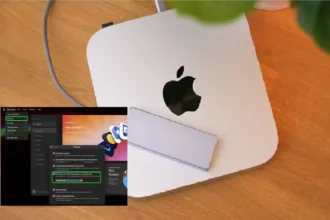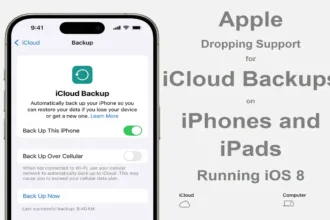A Blue Alert on an iPhone is an emergency notification sent out to inform the public about threats to the safety of law enforcement officers. Specifically, Blue Alerts aim to aid in apprehending suspects when a law enforcement officer is killed, injured, or missing in the line of duty.
When are Blue Alerts issued?
Blue Alerts can be issued in the following situations:
- When a law enforcement officer is killed or seriously injured in the line of duty
- When a law enforcement officer is missing in relation to their official duties
- When there is an imminent and credible threat to law enforcement officers
So in essence, Blue Alerts are all about protecting those who protect us – the police officers and law enforcement personnel who put their lives on the line daily.
Recent example of Blue Alert in Maryville, TN
On February 9th, 2024, the Tennessee Bureau of Investigation (TBI) issued a statewide Blue Alert for 42-year-old Kenneth Wayne DeHart. DeHart is wanted in connection with the fatal shooting of Blount County Sheriff’s Deputy Greg McGowan and the injury of Deputy Shelby Eggers during a traffic stop in Maryville, TN on February 8th. However, the link wasn’t working in the alert.
How do Blue Alerts work?
Similar to AMBER Alerts for missing children, Blue Alerts use the Emergency Alert System (EAS) to rapidly disseminate information to other law enforcement agencies, the media, and the general public.
When a Blue Alert is issued, alerts are broadcast across TV and radio stations. Alerts are also pushed out as text-like messages to cell phones and wireless devices capable of receiving Wireless Emergency Alerts (WEA).
In addition, Blue Alerts may be displayed on highway signs, lottery terminals, and other mediums to notify the public. The goal is to get the message out to as many people as possible quickly to solicit tips and information.
What information is included in a Blue Alert?
Typical information provided in a Blue Alert includes:
- Details about the suspect (name, photo, physical description, vehicle description, etc.)
- Location/area where the suspect was last seen
- Instructions for what to do if the suspect is spotted (e.g. call 911 immediately)
- Other details that could help locate the suspect or missing officer
Providing identifying details about the suspect and their vehicle can help the public be on the lookout and assist law enforcement should they spot the individual. Every piece of information helps in the search.
What should I do if I receive a Blue Alert?
If you receive a Blue Alert on your iPhone, carefully read over the details provided. Be attentive to any suspect or vehicle descriptions.
If you do see the suspect or have any other information to share, you should contact 911 or your local law enforcement immediately. Time is critical when an officer’s life hangs in the balance.
How to turn off Blue Alerts on iPhone
If you wish to turn off Blue Alert notifications on your iPhone, follow these steps:
- Open the Settings app
- Tap “Notifications”
- Scroll down and tap “Government Alerts”
- Under “Emergency Alerts” and “Public Safety Alerts”, toggle the switches to off (gray)
This will disable Blue Alerts while still allowing alerts for extreme weather and other emergencies. You can toggle these back on at any time if you change your mind.
The Purpose and Importance of Blue Alerts
Blue Alerts serve the important purpose of protecting law enforcement and increasing their safety. Let’s explore why the system exists and why Blue Alerts are vital for officers.
Honor Fallen Officers
The Blue Alert system honors fallen officers. The National Blue Alert Act passed in 2015 was named after Rafael Ramos and Wenjian Liu, two NYPD officers tragically killed in an ambush attack. The system serves as a living legacy to them and the many officers who have made the ultimate sacrifice.
Speed Up Apprehension of Suspects
Getting the word out quickly is key during dangerous situations. Blue Alerts harness the power of public awareness to share information rapidly. This can lead to faster suspect apprehension, before they have time to get too far away or do more harm.
Aid Search for Missing Officers
When an officer goes missing, Blue Alerts activate the community to be on the lookout. More eyes in more places increases the chances of locating missing or injured officers promptly. Timeliness is critical for officer rescue and survival.
Deter Attacks on Law Enforcement
By spreading information about suspects swiftly, Blue Alerts also deter violence against police through increased likelihood the attacker will get caught. Getting away with harming an officer becomes much harder.
Strengthen Community-Police Relations
Blue Alerts allow community members to directly assist law enforcement when they need it most. By taking action together, relationships can be strengthened between citizens and police. It also reinforces that officers risk so much to keep the public safe.
How to Respond to Blue Alerts
When a Blue Alert appears on your iPhone, here is important guidance on responding:
Remain Calm
It can be startling to suddenly receive an emergency notification. Take a deep breath and assess the information provided in as composed a manner as possible.
Evaluate the Relevance
Evaluate if the alert seems relevant to your location and routine activities. For example, does the suspect or vehicle description match anyone you know or have recently encountered? Could they be in your area?
Confirm It’s Official
Scams do unfortunately happen. If something seems suspicious, confirm the alert came from an official government channel rather than a random number.
Contact Authorities With Any Information
If you believe you have seen the suspect or have any potentially relevant information, contact law enforcement immediately.
Avoid Approaching Suspects
For your own safety, never attempt to approach or interact with an armed and dangerous suspect. Simply contact the authorities to handle the situation professionally.
Share Official Alerts Only
You can re-share official Blue Alerts through social media and text messages to friends and family. This further spreads legitimate information released by law enforcement.






